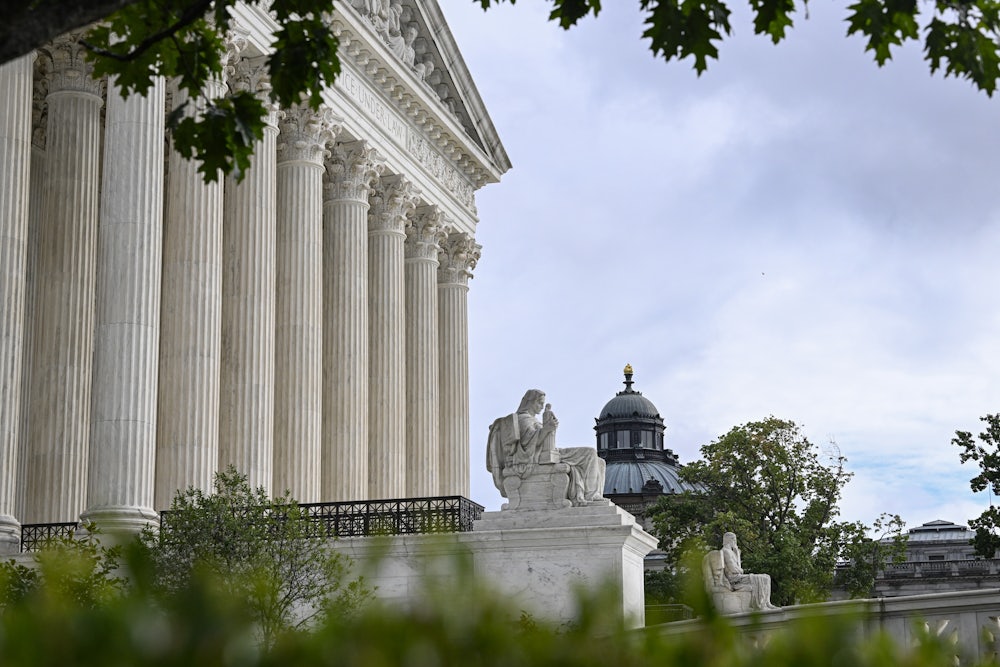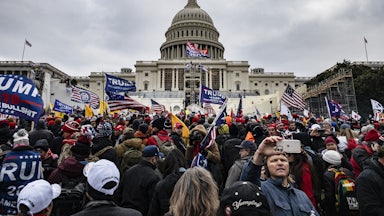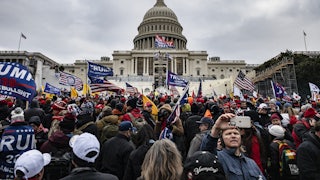Alabama’s long, hot summer of defiance came to an end this week after the Supreme Court declined to stop a district court from redrawing the state’s congressional map to include a second majority-Black district.
The final word came in a short, unsigned order on Tuesday. The justices did not write anything beyond their formulaic announcement that a stay of the lower court’s ruling would not be granted. But their silence said everything. None of the justices publicly dissented from the move. Justice Brett Kavanaugh, whose concurring opinion in the court’s ruling in June helped spark the state’s pushback, said nothing in support of its cause. Nor did Justice Clarence Thomas, a longtime critic of the court’s approach to racial-gerrymandering cases, or any of the other dissenting justices break ranks.
Alabama’s Republican-led government vented its frustration with the decision while acknowledging it would now abide by it. Steve Marshall, the state’s attorney general, spoke directly to “the People of Alabama” in a statement on Tuesday. “Our communities, local economies, and basic geography will be cast aside in the radical pursuit of racial quotas,” he wrote. “There is simply no other explanation for the absurd disfigurement.”
Marshall went on to blame “left-wing activists” for “brazen and divisive commandeering” of the state’s redistricting process that, in his view, meant “America’s congressional elections as we know them will never be the same.” But the fault lies not in those activists but in themselves. By placing themselves in direct defiance of the federal courts, the state left the Supreme Court with no other choice but to reject them.
Allen v. Milligan’s details are familiar by now: Alabama, like every other state, redrew its legislative districts after the 2020 census to adjust for population shifts. A coalition of Alabama voters and voting rights groups then challenged the updated map via Section 2 of the Voting Rights Act, which generally forbids racial discrimination in election laws and policies. That includes racial gerrymandering, which the plaintiffs argued Alabama had committed by not drawing a second majority-Black district for the state.
While Black Alabamians live in significant numbers in the state’s southern half, along what is known as the Black Belt, the legislature has consistently divided that population into multiple districts where white voters each have a comfortable majority. A special three-judge panel of federal district court judges sided with the plaintiffs, noting in its 227-page opinion that the dispute was not “a close one.” Alabama asked the Supreme Court to overturn that ruling during the court’s last term, using a variety of arguments to contend that its map complied with Section 2 and, in the alternative, that obeying a court order to draw a second majority-Black district would itself amount to racial gerrymandering.
The Supreme Court disagreed on both counts. In a 5–4 decision, Chief Justice John Roberts wrote that the state’s arguments were not particularly convincing when placed alongside the court’s decades-old precedents on racial-gerrymandering claims. And he rejected Alabama’s suggestion outright that the remedy itself would be racial gerrymandering by noting that the court had allowed it from time to time in narrow circumstances for roughly four decades.
Roberts and Justice Brett Kavanaugh joined the court’s liberals to form a majority in the ruling. But Kavanaugh also wrote separately to signal that he might be open to reconsidering Section 2’s constitutionality in a future case if phrased correctly. “Justice Thomas notes, however, that even if Congress in 1982 could constitutionally authorize race-based redistricting under Section 2 for some period of time, the authority to conduct race-based redistricting cannot extend indefinitely into the future,” Kavanaugh wrote. “But Alabama did not raise that temporal argument in this Court, and I therefore would not consider it at this time.”
The justices occasionally hint in concurring and dissenting opinions that they would be open to “considering” or “reconsidering” legal issues under the right circumstances. Lawyers often interpret this as an invitation to bring those issues before the court. Figuring out whether a single justice’s invitation actually reflects a potential majority of the justices is always fraught, but it is considerably easier when that justice holds the median seat on the court—which Kavanaugh currently does.
Alabama, however, may have misunderstood the nature of Kavanaugh’s invitation. It apparently saw an opportunity to disregard the Supreme Court’s ruling—of which Kavanaugh was part of the majority—and try again. State lawmakers enacted new maps in July that plainly ignored the court’s directive to create a second majority-Black district, then argued before the three-judge panel in the district court that they had done nothing wrong. The panel, as you might imagine, was not pleased.
“We are disturbed by the evidence that the State delayed remedial proceedings but ultimately did not even nurture the ambition to provide the required remedy,” the three-judge panel wrote in a ruling last month on Alabama’s compliance. “And we are struck by the extraordinary circumstance we face. We are not aware of any other case in which a state legislature—faced with a federal court order declaring that its electoral plan unlawfully dilutes minority votes and requiring a plan that provides an additional opportunity district—responded with a plan that the state concedes does not provide that district.”
The state, undeterred, then sought relief from the Supreme Court, perhaps thinking Kavanaugh would swing to the other side this time. Its brief cited the justice’s concurring opinion 10 times, including for its proposition that drawing a second majority-Black district was the required remedy. “That rule would command, rather than condemn, a racial gerrymander,” Alabama told the justices in its request for a stay of the lower court’s ruling.
In response, the plaintiffs emphasized what Alabama’s request actually meant in practice. “Even though this court affirmed the district court’s order in full, Alabama refused to even try to comply with that order and enact the required remedy,” the plaintiffs told the justices. “Instead, the legislature ignored the injunction, backed a plan drawn by an unknown mapmaker, adopted reverse-engineered ‘findings’ drafted by the Alabama solicitor general, then claimed that these unprecedented ‘findings’ compelled the dilutive 2023 plan. Alabama’s open defiance of this court should be condemned, not rewarded with a stay.”
Fortunately for Alabama voters—and for the authority of the federal courts—Alabama’s defiance went unrewarded. This is likely not the end of the struggle over racial gerrymandering in the courts, of course, and Kavanaugh may yet join with the other four conservative justices to sharply limit the remedies for it. For now, however, the Supreme Court has reasserted the courts’ authority and once again rejected a Southern state’s attempts to defy it. If Alabama is looking for someone to blame for this situation, it should find a mirror.










